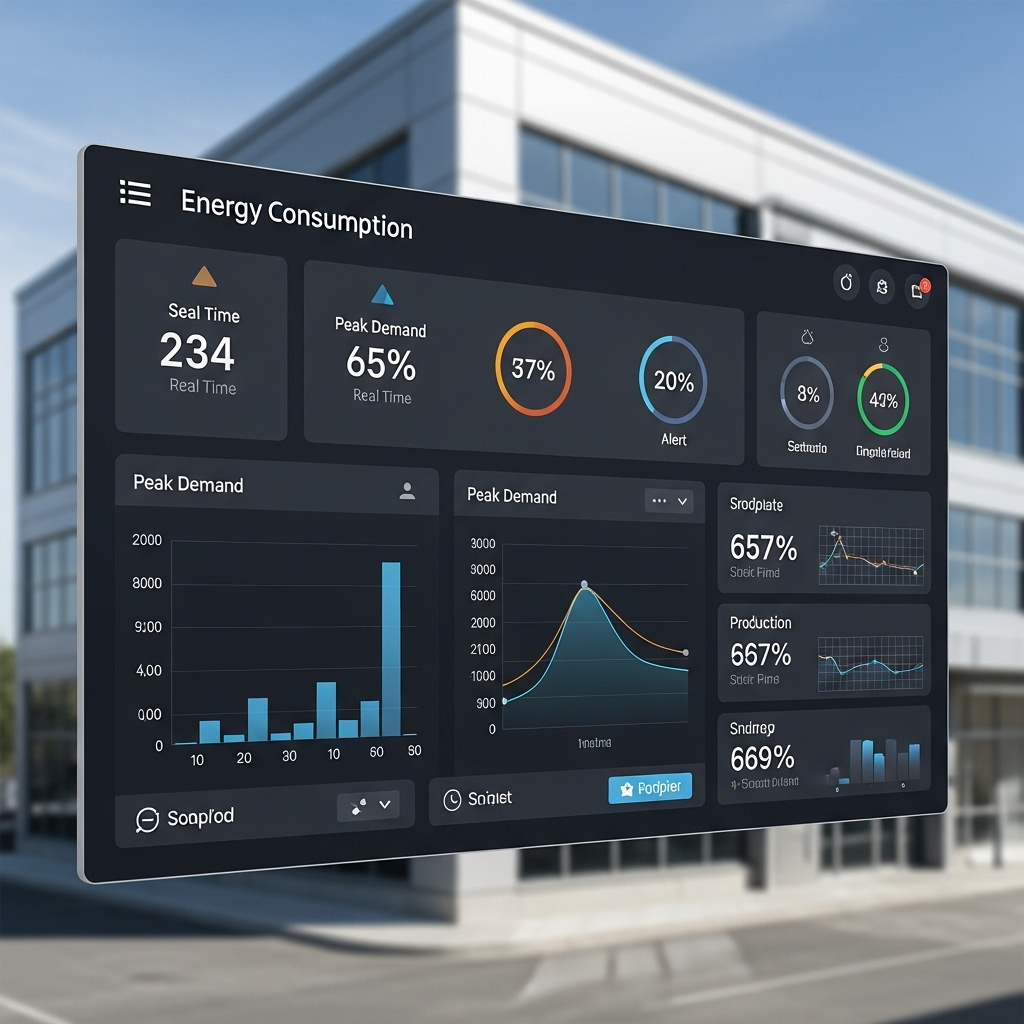The Green Button initiative promises a straightforward way to access and share your energy data. For owners of solar panels and energy storage systems, this data is a valuable resource. Yet, questions about data privacy and the usefulness of the data often arise. Many wonder what information is actually being shared and how secure it is. This article separates the myths from the reality of Green Button, focusing on data privacy and granularity, so you can confidently use this tool to your advantage.
Deconstructing Green Button: What Data Is Actually Shared?
Understanding the Green Button standard starts with knowing exactly what data it handles. The standard was designed for transparency and utility, not surveillance. It focuses on your energy consumption history, providing a digital record of what your utility meter has already recorded.
The Core of Green Button Data
At its heart, Green Button standardizes the format of your energy usage data. This typically includes your electricity consumption in kilowatt-hours (kWh), the associated costs, and the time periods for that usage. It digitizes the information you already see on your monthly utility bill. It answers the questions of 'how much' energy you used and 'when' you used it. It does not, however, reveal 'how' you used it, meaning it cannot identify individual appliances.
Data Granularity: From Monthly Bills to 15-Minute Intervals
The true power of Green Button data lies in its potential granularity. While a monthly bill gives you a single data point for an entire month, Green Button can provide much more detail. Depending on your utility and the type of meter you have, you might access data in daily, hourly, or even 15-minute intervals. This level of detail is transformative for energy management.
| Data Granularity | Information Provided | Best Use Case |
|---|---|---|
| Monthly | Total kWh consumption and cost for the month. | Basic budget tracking and year-over-year comparisons. |
| Daily | Total kWh consumption for each 24-hour period. | Identifying high-usage days (e.g., weekends vs. weekdays). |
| Hourly / 15-Minute | Detailed consumption patterns throughout the day. | Accurately sizing a battery storage system, identifying peak usage times, and verifying solar self-consumption. |
The Myth of Real-Time Control
A common misconception is that Green Button provides real-time control over your energy assets. This is incorrect. Green Button is a data access and sharing standard, not a command-and-control protocol. It allows you or an authorized application to 'pull' historical data. This contrasts with standards like OpenADR, which are designed to 'push' signals from the utility to devices for active demand response events.
Privacy by Design: How Green Button Protects Your Information
Data privacy is a foundational component of the Green Button initiative. The system is built on a framework of explicit user consent, ensuring you remain the gatekeeper of your own information. You decide who gets to see your data and for how long.
The Authorization and Consent Framework
Sharing your data via Green Button requires a clear, affirmative action on your part. Through your utility's web portal, you explicitly authorize a third-party application to access your data. This is not a blanket approval; it is a specific, revocable permission. If you decide you no longer want to share your data with a particular service, you can log in to your utility account and revoke access at any time. This user-centric control is a core privacy feature.
Anonymization and Aggregation Practices
Beyond individual user control, Green Button data can be used for broader energy analysis through anonymization and aggregation. For academic research or grid planning, data from many users can be stripped of personally identifiable information and combined. This creates valuable large-scale datasets that help utilities and policymakers plan for a more resilient grid. As analyses in reports like the IEA's Solar PV Global Supply Chains show, comprehensive data is fundamental to understanding and improving our energy infrastructure. All data transfers under the Green Button Connect My Data protocol use secure, encrypted connections to protect information in transit.
Granularity in Action: Practical Applications for Solar and Storage
With privacy concerns addressed, the focus shifts to the practical benefits of granular data. For anyone with or considering a solar and storage system, detailed energy data is not just interesting—it is essential for making sound financial and technical decisions.
Sizing Your Energy Storage System Accurately
A monthly electric bill is insufficient for sizing a home battery. It hides the peaks and valleys of your daily usage. With 15-minute interval data from Green Button, you can see exactly when you use the most power. For example, you might discover a large, sustained energy peak from 6 PM to 9 PM. This insight allows you to select a battery with the right capacity and power output to shift that load, maximizing your use of stored solar energy and minimizing reliance on the grid. Matching your usage profile with the right equipment is critical, and understanding key metrics is part of that. The (https://www.anernstore.com/blogs/diy-solar-guides/ultimate-reference-solar-storage-performance) explains how factors like Depth of Discharge (DoD) and system efficiency directly impact your return on investment, and Green Button data provides the real-world context for these calculations.
Validating Solar Panel Performance
How do you know if your solar array is performing as expected? By comparing your solar production data (from your inverter's monitoring app) with your consumption data (from Green Button), you can get a clear picture. This comparison helps you verify your self-consumption ratio—the percentage of solar energy you use directly—and confirm that your utility is crediting you correctly for any excess power sent to the grid.
Identifying Energy Efficiency Opportunities
Granular data is also a powerful tool for finding energy waste. A close look at your hourly data might reveal a significant 'phantom load'—a high baseline level of consumption even when you think everything is turned off. This could be caused by older appliances or electronics in standby mode. By identifying these hidden energy drains, you can take targeted action to reduce waste and lower your overall energy costs.
Green Button vs. OpenADR: Different Tools for Different Jobs
It is important to distinguish Green Button from other energy standards like OpenADR. While they can work together in a smart energy ecosystem, they serve fundamentally different purposes and have different privacy considerations.
Data Access vs. Automated Control
The primary difference is simple: Green Button is for reading data, while OpenADR is for sending control signals.
| Standard | Primary Function | Data Flow | User Interaction |
|---|---|---|---|
| Green Button | Provides access to historical energy usage data. | Pull (User/App requests data from utility). | Explicit consent to share data. |
| OpenADR | Enables automated demand response. | Push (Utility sends signals to devices). | Opt-in to a program allowing temporary control of assets. |
Privacy Implications Compared
The privacy models are also different. With Green Button, the risk is centered on the confidentiality of your historical energy usage. This is managed through your explicit consent. With OpenADR, you are granting a utility or aggregator a degree of control over your property, such as your battery or smart thermostat. This requires robust security to prevent unauthorized access and ensure the device operates as intended. Both are secure, but they protect against different types of risks.
Looking Ahead: The Evolving Role of Standardized Data
Green Button is a secure, user-controlled standard that empowers you with valuable insights into your energy use. Its power comes from data granularity, which enables smarter decisions about solar, storage, and efficiency. It is a tool for information, not control. As our energy system becomes more decentralized and dynamic, the role of data standards will only grow. The trend towards renewables, highlighted years ago in the Medium-Term Renewable Energy Market Report 2016, continues to accelerate, making data-driven management more critical than ever. By understanding and using tools like Green Button, you can take an active role in optimizing your own energy independence and contributing to a more efficient grid.
Disclaimer: This article is for informational purposes only. It does not constitute financial, legal, or investment advice. Consult with qualified professionals before making any decisions related to energy systems or data sharing programs.
Frequently Asked Questions
Can my utility see which appliances I am using through Green Button?
No. Green Button data shows how much electricity was used and when, not how. It does not provide appliance-level details. Your overall usage patterns might suggest certain activities (like EV charging overnight), but it cannot identify a specific device.
Is Green Button data granular enough for my solar and battery system?
It depends on your utility. Data provided in 15-minute or hourly intervals is highly effective for analyzing load profiles, sizing a battery, and verifying solar performance. Monthly data is less useful for these specific tasks but can still help with general energy trend analysis.
What happens if I no longer want to share my data with a third-party app?
You are in control. The Green Button framework requires that you can revoke access at any time through your utility's online portal. Once you revoke permission, the third party can no longer request updated data.
Does using Green Button give the utility control over my battery?
No. Green Button is a data-sharing standard, not a control protocol. It allows you or your apps to read energy data. Protocols like OpenADR are used for demand response events where a utility might send a signal to temporarily adjust your battery's behavior, but this is a separate program you would need to opt into.





Leave a comment
All comments are moderated before being published.
This site is protected by hCaptcha and the hCaptcha Privacy Policy and Terms of Service apply.